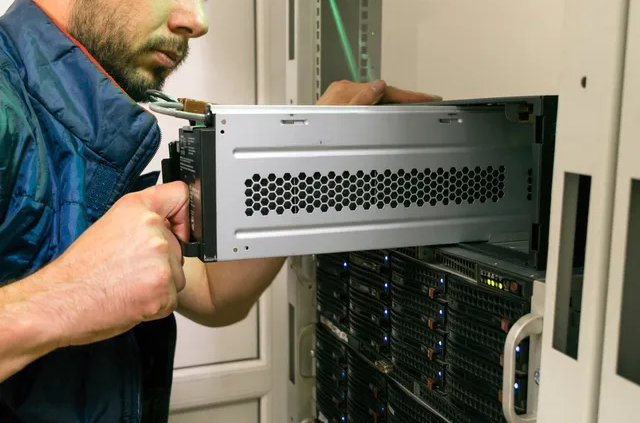How Often Should Data Centers Replace UPS Batteries? A Strategic Approach to Lifecycle Planning
Introduction
For data centers, uptime isn’t just a performance metric—it’s a non-negotiable standard. Among the systems designed to safeguard operational continuity, the uninterruptible power supply (UPS) plays a crucial role. But what powers the UPS itself? The batteries behind the system are often overlooked—until they fail.
So how often should UPS batteries be replaced in a data center environment? This article explores average replacement intervals, key factors affecting battery longevity, and strategic planning practices to ensure both reliability and cost control.
- What’s the Typical Replacement Cycle for UPS Batteries?
UPS battery life varies depending on the type of battery used and the surrounding operating conditions. Here’s a general guide:
| Battery Type | Typical Replacement Cycle |
| VRLA (Sealed Lead Acid) | 3–5 years |
| Flooded Lead Acid | 10–15 years (with intensive maintenance) |
| Lithium-ion (Li-ion) | 8–10 years or more |
These figures represent industry averages. A battery rated for five years may require replacement in three if exposed to high temperatures or excessive discharge. On the other hand, lithium-ion batteries under optimal conditions may last well beyond their warranty period.
- Factors That Influence Battery Longevity in Data Centers
UPS batteries are sensitive to their environment and operational patterns. Major factors affecting lifespan include:
- Ambient Temperature: Every 10°C (18°F) above 25°C can cut lead-acid battery life by 50%.
- Discharge Frequency and Depth: Frequent and deep discharges accelerate chemical degradation.
- Charge Management: Improper float voltage settings or overcharging leads to early failure or thermal issues.
- Maintenance Practices: Lack of routine inspections, poor record-keeping, or delayed responses increase risk.
- Battery Chemistry: Lithium batteries offer better thermal tolerance, longer cycle life, and reduced maintenance needs.
- How Should Data Centers Plan UPS Battery Replacement?
Data centers that operate under strict uptime requirements typically use proactive replacement strategies rather than waiting for signs of failure.
Best practices include:
- Use conservative replacement intervals: Replace batteries before reaching their rated end-of-life (e.g., swap 5-year VRLA batteries after 4 years).
- Monitor performance metrics: Track temperature, internal resistance, discharge profiles, and runtime degradation.
- Stagger replacements: Implement phased replacement schedules to reduce risk and spread costs.
- Align with SLA and maintenance windows: Integrate battery replacement into broader facility uptime and service planning.
- Should You Extend Your Cycle by Switching to Lithium?
While VRLA batteries remain common in many facilities, lithium-ion options are gaining popularity in mission-critical environments due to their extended service life and lower long-term maintenance burden.
Advantages of lithium-ion batteries include:
- Longer replacement intervals (8–10+ years)
- Smaller size and lighter weight
- Better high-temperature performance
- Built-in Battery Management Systems (BMS) for real-time diagnostics and alerts
- Lower total cost of ownership (TCO) over a multi-year period
🔗 Related Read: Planning for UPS Battery Replacement: Exploring Lithium Options for Data Centers
This article offers a deeper dive into lithium-based UPS systems and how they compare to traditional options in reliability and efficiency.
- Conclusion: Managing UPS Battery Replacement Strategically
UPS battery replacement should never be left to chance. In high-availability data centers, a clear lifecycle strategy helps minimize downtime, reduce total operational costs, and maintain continuous uptime.
Whether you’re maintaining a VRLA-based system or exploring lithium alternatives, understanding how often to replace UPS batteries is the first step toward a more resilient and cost-effective power infrastructure.
For detailed recommendations tailored to your specific battery model and operating environment, it’s best to consult your battery manufacturer or power system integrator. They can offer guidance based on real-world performance data and usage conditions.


